This list reflects the rankings of all 174 lists published as of October 1, 2022. It reflects a few changes from the published book: The Lover has ascended into the Top Ten while the Candide and A Sentimental Education have moved down but not out of the list.
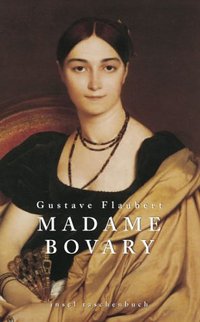 1. Madame Bovary by Gustave Flaubert (1857). Of the many nineteenth-century novels about adulteresses, only Madame Bovary features a heroine frankly detested by her author. Flaubert battled for five years to complete his meticulous portrait of extramarital romance in the French provinces, and he complained endlessly in letters about his love-starved main character — so inferior, he felt, to himself. In the end, however, he came to peace with her, famously saying, “Madame Bovary: c’est moi.” A model of gorgeous style and perfect characterization, the novel is a testament to how yearning for a higher life both elevates and destroys us.
1. Madame Bovary by Gustave Flaubert (1857). Of the many nineteenth-century novels about adulteresses, only Madame Bovary features a heroine frankly detested by her author. Flaubert battled for five years to complete his meticulous portrait of extramarital romance in the French provinces, and he complained endlessly in letters about his love-starved main character — so inferior, he felt, to himself. In the end, however, he came to peace with her, famously saying, “Madame Bovary: c’est moi.” A model of gorgeous style and perfect characterization, the novel is a testament to how yearning for a higher life both elevates and destroys us.
 2. In Search of Lost Time by Marcel Proust (1913–27). It’s about time. No, really. This seven-volume, three-thousand-page work is only superficially a mordant critique of French (mostly high) society in the belle époque. Both as author and as “Marcel,” the first-person narrator whose childhood memories are evoked by a crumbling madeleine cookie, Proust asks some of the same questions Einstein did about our notions of time and memory. As we follow the affairs, the badinage, and the betrayals of dozens of characters over the years, time is the highway and memory the driver.
2. In Search of Lost Time by Marcel Proust (1913–27). It’s about time. No, really. This seven-volume, three-thousand-page work is only superficially a mordant critique of French (mostly high) society in the belle époque. Both as author and as “Marcel,” the first-person narrator whose childhood memories are evoked by a crumbling madeleine cookie, Proust asks some of the same questions Einstein did about our notions of time and memory. As we follow the affairs, the badinage, and the betrayals of dozens of characters over the years, time is the highway and memory the driver.
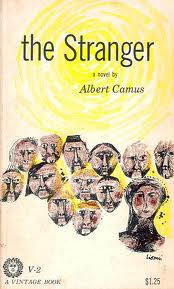 3. The Stranger by Albert Camus (1942). The opening lines—“Mother died today. Or, maybe, yesterday. I can’t be sure”—epitomize Camus’s celebrated notions of “the absurd.” His narrator, Meursault, a wretched little Algerian clerk sentenced to death for the murder, feels nothing: no remorse, love, guilt, grief, or hope. But he’s not a sociopath; he’s just honest. An embodiment of existential philosophy, he believes in no higher power and accepts that we are born only to die. Our only choice is to act “as if” life has meaning and thereby gain some freedom.
3. The Stranger by Albert Camus (1942). The opening lines—“Mother died today. Or, maybe, yesterday. I can’t be sure”—epitomize Camus’s celebrated notions of “the absurd.” His narrator, Meursault, a wretched little Algerian clerk sentenced to death for the murder, feels nothing: no remorse, love, guilt, grief, or hope. But he’s not a sociopath; he’s just honest. An embodiment of existential philosophy, he believes in no higher power and accepts that we are born only to die. Our only choice is to act “as if” life has meaning and thereby gain some freedom.
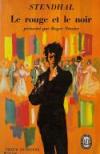 4. The Red and the Black by Stendhal (1830). Stendhal inaugurated French realism with his revolutionary colloquial style and the famous pronouncement, “A novel is a mirror carried along a highway.” Julien Sorel, the tragic antihero, rises from peasant roots through high society. In his character, the “red” of soldiering and a bygone age of heroism vies with the “black” world of the priesthood, careerism, and hypocrisy.
4. The Red and the Black by Stendhal (1830). Stendhal inaugurated French realism with his revolutionary colloquial style and the famous pronouncement, “A novel is a mirror carried along a highway.” Julien Sorel, the tragic antihero, rises from peasant roots through high society. In his character, the “red” of soldiering and a bygone age of heroism vies with the “black” world of the priesthood, careerism, and hypocrisy.
 5. The Charterhouse of Parma by Stendhal (1839). (See below).
5. The Charterhouse of Parma by Stendhal (1839). (See below).
 6. Cousin Bette by Honoré de Balzac (1847). Lisbeth (Bette) Fischer, a seamstress for the demimonde of actresses and courtesans and the poor relation of Baron Hulot, has a secret: she is helping to support a poor but noble Polish sculptor. Baron Hulot’s daughter Hortense discovers the secret and helps herself to the handsome sculptor. Bette then unleashes an underhanded stratagem dictated by her implacably vengeful heart: using Baron Hulot’s insatiable lust as a lever, Bette organizes her courtesan connections to ruin him, both morally and financially. Scary and psychologically acute.
6. Cousin Bette by Honoré de Balzac (1847). Lisbeth (Bette) Fischer, a seamstress for the demimonde of actresses and courtesans and the poor relation of Baron Hulot, has a secret: she is helping to support a poor but noble Polish sculptor. Baron Hulot’s daughter Hortense discovers the secret and helps herself to the handsome sculptor. Bette then unleashes an underhanded stratagem dictated by her implacably vengeful heart: using Baron Hulot’s insatiable lust as a lever, Bette organizes her courtesan connections to ruin him, both morally and financially. Scary and psychologically acute.
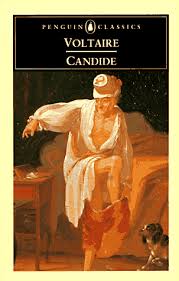 7. Candide by Voltaire (1759). In this withering satire of eighteenth-century optimism, Candide wanders the world testing his tutor Pangloss’s belief that we live in the “best of all possible worlds.” When Candide loses his true love, gets flogged in the army, injured in an earthquake, and robbed in the New World, he finally muses, “If this is the best of all possible worlds, what are the others?” In response to life’s mysteries, he concludes, the best we can do is patiently cultivate our own gardens.
7. Candide by Voltaire (1759). In this withering satire of eighteenth-century optimism, Candide wanders the world testing his tutor Pangloss’s belief that we live in the “best of all possible worlds.” When Candide loses his true love, gets flogged in the army, injured in an earthquake, and robbed in the New World, he finally muses, “If this is the best of all possible worlds, what are the others?” In response to life’s mysteries, he concludes, the best we can do is patiently cultivate our own gardens.
 8. Germinal by Émile Zola (1884). As in old pictures of Pittsburgh, a pall of industrial smoke seems to hang over Zola’s grim, stirring novel about a miners strike. Zola uses his usual style of fine-grained graininess to describe the lives crushed (sometimes literally) by work, and the excessive poverty to which the miners’ families seem condemned. His is a collective portrait in which his main character, Etienne Lantier, gets engulfed by the hugeness and dangerousness of the mines (which bear the sinister nickname Le Voreux, or “the voracious ones”) and the eventual revolt against the mining company.
8. Germinal by Émile Zola (1884). As in old pictures of Pittsburgh, a pall of industrial smoke seems to hang over Zola’s grim, stirring novel about a miners strike. Zola uses his usual style of fine-grained graininess to describe the lives crushed (sometimes literally) by work, and the excessive poverty to which the miners’ families seem condemned. His is a collective portrait in which his main character, Etienne Lantier, gets engulfed by the hugeness and dangerousness of the mines (which bear the sinister nickname Le Voreux, or “the voracious ones”) and the eventual revolt against the mining company.
 9. The Lover by Marguerite Duras (1984). This Prix Goncourt–winning work might now be considered an early “fictional memoir.” Drawn from Duras’s life in prewar Indochina, it tells the story of the ill-fated love between a young girl and her Chinese lover. Lyrical, imagistic, and structured in cumulative short passages, Duras combines the beautiful and the terrible in this slim, compelling novel.
9. The Lover by Marguerite Duras (1984). This Prix Goncourt–winning work might now be considered an early “fictional memoir.” Drawn from Duras’s life in prewar Indochina, it tells the story of the ill-fated love between a young girl and her Chinese lover. Lyrical, imagistic, and structured in cumulative short passages, Duras combines the beautiful and the terrible in this slim, compelling novel.
 9. Sentimental Education: The Story of a Young Man by Gustave Flaubert (1869). The last work published by Flaubert, this novel follows the ambitions and whims of the young Frédéric Moreau as he travels from his provincial hometown to the enticing metropolis of Paris. Though he survived the Revolution of 1848, Moreau is still prone to all the mistakes and petty concerns of a young man of the middle class: he develops an infatuation for a married woman, Madame Arnoux, and falls in and out of love with her throughout the novel; his ambitious endeavors soon bore him and leave him with Parisian ennui; and, despite the founding of the Second French Empire, Moreau is disappointed by the lack of social progress around him. Through all of this disillusionment, Flaubert makes it very clear that he saw his generation as one without true passion or genuine feeling, utilizing irony and pessimism to underscore the mood of that social and political time in the history of France.
9. Sentimental Education: The Story of a Young Man by Gustave Flaubert (1869). The last work published by Flaubert, this novel follows the ambitions and whims of the young Frédéric Moreau as he travels from his provincial hometown to the enticing metropolis of Paris. Though he survived the Revolution of 1848, Moreau is still prone to all the mistakes and petty concerns of a young man of the middle class: he develops an infatuation for a married woman, Madame Arnoux, and falls in and out of love with her throughout the novel; his ambitious endeavors soon bore him and leave him with Parisian ennui; and, despite the founding of the Second French Empire, Moreau is disappointed by the lack of social progress around him. Through all of this disillusionment, Flaubert makes it very clear that he saw his generation as one without true passion or genuine feeling, utilizing irony and pessimism to underscore the mood of that social and political time in the history of France.
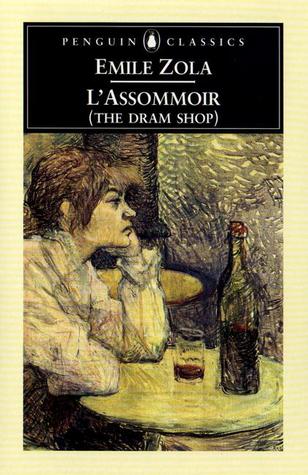 10 (tie). L’Assommoir (The Dram Shop) by Émile Zola (1877). Like Uncle Tom’s Cabin, this story —of the downfall of a Parisian laundress —turned a burning social issue into a sensational best-seller. The desperate alcoholism of Gervaise Lantier and her husband held a mirror to the shocking moral condition of the urban poor. But it is saved from mere didacticism by Zola’s eye and ear. The unbuttoned urban dialogue prefigures Celine and Henry Miller; the cinematic structuring of the novel’s great scenes suggests that Zola would have made a great film director.
10 (tie). L’Assommoir (The Dram Shop) by Émile Zola (1877). Like Uncle Tom’s Cabin, this story —of the downfall of a Parisian laundress —turned a burning social issue into a sensational best-seller. The desperate alcoholism of Gervaise Lantier and her husband held a mirror to the shocking moral condition of the urban poor. But it is saved from mere didacticism by Zola’s eye and ear. The unbuttoned urban dialogue prefigures Celine and Henry Miller; the cinematic structuring of the novel’s great scenes suggests that Zola would have made a great film director.
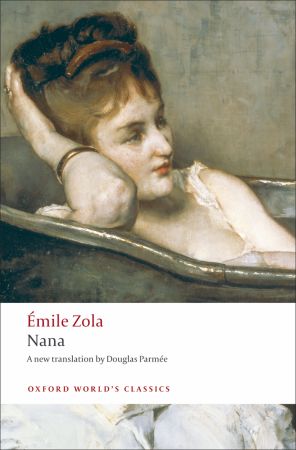 10 (tie). Nana by Émile Zola (1880). Nana is a low-born courtesan who succeeds among the French elite. Zola meant his heroine to represent the corruption of the Second Empire under the twin stresses of hedonism and capitalism. But like some uncontrollable genie uncorked from a bottle, she becomes the greatest femme fatale since Helen of Troy. The most explicit of the classic nineteenth-century novels, Nana exists in the vital midpoint between Anna Karenina and Valley of the Dolls.
10 (tie). Nana by Émile Zola (1880). Nana is a low-born courtesan who succeeds among the French elite. Zola meant his heroine to represent the corruption of the Second Empire under the twin stresses of hedonism and capitalism. But like some uncontrollable genie uncorked from a bottle, she becomes the greatest femme fatale since Helen of Troy. The most explicit of the classic nineteenth-century novels, Nana exists in the vital midpoint between Anna Karenina and Valley of the Dolls.
Appreciation of Stendhal’s The Charterhouse of Parma by Francine Prose
Opening The Charterhouse of Parma is like stepping into the path of a benevolent cyclone that will pick you up and set you down, gently but firmly, somewhere else. You can still feel the tailwind of inspiration, the high speed at which Stendhal wrote it, and you can’t help admiring its assurance and audacity.
Stendhal marks the boundaries of the more traditional nineteenth-century novel, and then proceeds to explode them. Just as Fabrizio keeps discovering that his life is taking a different direction from what he’d imagined, so the reader keeps thinking that Stendhal has written one kind of book, then finding that it is something else entirely. Stendhal writes as if he can’t see why everything—politics, history, intrigue, the battle of Waterloo, a love story, several love stories—can’t be compressed into a single novel. The result is a huge canvas on which every detail is painted with astonishing realism and psychological verisimilitude.
First you are totally swept up in Fabrizio’s peculiar experience of the Napoleonic wars, then moved by the Krazy Kat love triangle involving Fabrizio, Mosca, and Gina, and throughout, astonished by the accuracy of Stendhal’s observations on love, jealousy, ambition, and of how the perception of biological age influences our behavior.
I love the way Stendhal uses “Italian” to mean passionate, and how he falls in love with his characters, for all the right reasons. One can only imagine how Tolstoy would have punished Gina, who is not only among the most memorable women in literature, but who is also scheming, casually adulterous, and madly in love with her own nephew. Each time I finish the book, I feel as if the world has been washed clean and polished while I was reading, and as if everything around me is shining a little more brightly.
Top Ten Books of 18th Century from the Published Book (Due to an editing error, two Stendhal titles were omitted from this list; it is corrected here.)
1. Madame Bovary by Gustave Flaubert (1857)
2. In Search of Lost Time by Marcel Proust (1913–27)
3. The Stranger by Albert Camus (1942).
4. The Red and the Black by Stendhal (1830)
5. The Charterhouse of Parma by Stendhal (1839)
6. Candide by Voltaire (1759)
7. Germinal by Émile Zola (1884)
8. L’Assommoir (The Dram Shop) by Émile Zola (1877)
9. Nana by Émile Zola (1880).
10. Cousin Bette by Honoré de Balzac (1847)